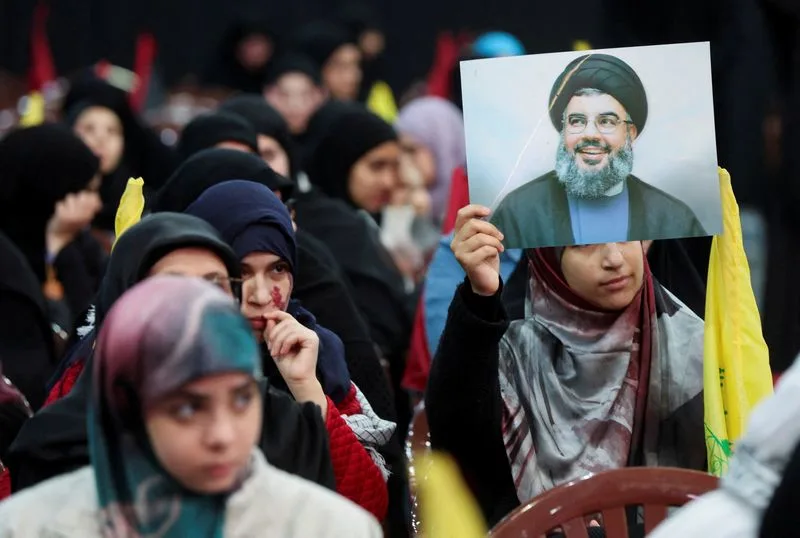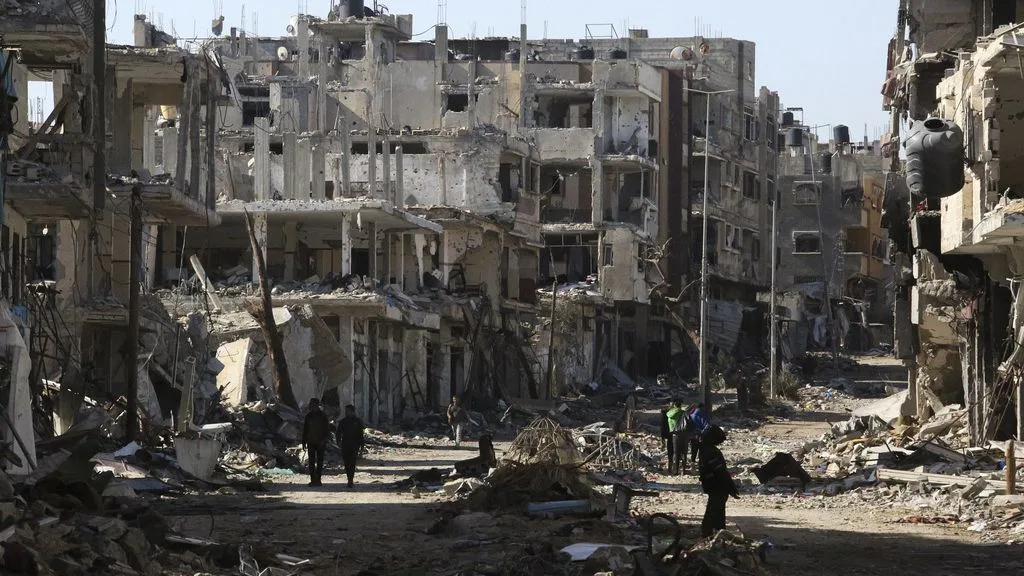After weeks and weeks of discussion in the media about why Prime Minister Benjamin Netanyahu had not presented any plan for the day after the war ends in Gaza, after endless hand-wringing by pundits and critics warning that a lack of a plan means that a vacuum will be created that will inevitably be filled by bad actors, Netanyahu released a one-page sheet of principles last Thursday night that landed like a feather – barely noticed, hardly impactful.
Judging by how the plan, titled “The Day After Hamas: Principles,” was rolled out – late at night, after the weekend papers had already gone to print – that was the design: to present the guidelines with minimal fanfare.
But why? Why release something like this if you don’t want a buzz? For what purpose?
Simple: To check a box, to get something out there, and to silence the criticism.
These critics were not only, or even primarily, domestic critics, but, rather senior voices in the administration in Washington saying that it is all well and good for Netanyahu to repeat the mantra of absolute victory over Hamas in Gaza, but then what? Israel needs a plan; it needs to articulate what it wants.
This criticism was often laced with words of warning about the American experience in Iraq and Afghanistan: that it is not enough to win the war in the sense of defeating the enemy, that there has to be an endgame, a viable plan of action to fill the vacuum once the enemy is defeated.
This document represents Netanyahu’s bare-bones answer to the “and then what?” question, with an emphasis on the word “bare-bones.” It is a set of principles circulated to security cabinet members for discussion, not meant as a detailed plan.
But it is something, a starting point. It is a starting point that reflects Netanyahu’s political constraints and one that largely places him at odds with the US.
Constraints on Netanyahu
FIRST TO THE political constraints. For months, conventional wisdom held that the main reason Netanyahu waited so long to articulate any vision for the day after Hamas was fear of alienating Otzma Yehudit’s Itamar Ben-Gvir and the Religious Zionist Party’s Bezalel Smotrich and giving them an excuse to leave the coalition.
Both Ben-Gvir and Smotrich want to see Jewish settlements reestablished in Gaza, and both are more allergic to any role for the Palestinian Authority to play in Gaza than even Netanyahu, who himself is adamantly opposed. Netanyahu was concerned that ruling out resettlement or providing any opening for the PA to move back in would create coalition difficulties.
The prime minister ultimately defused this potential political time bomb by simply not addressing either issue in his paper. Neither the PA nor reestablishing settlements is mentioned once.
THE PAPER begins by spelling out necessary conditions for the “day after,” which is essentially a restatement of what Netanyahu views as the goals of the war: destruction of the military and governmental capabilities of Hamas and Islamic Jihad, the return of the hostages, and prevention over the long term of any threat from Gaza.
It then talks about the security requirements in Gaza in the interim period. These include Israel retaining indefinite freedom of action inside Gaza to prevent a buildup of the terrorists’ infrastructure there and to deal with any terrorist threat that may emerge.
The paper calls for a buffer zone inside Gaza along the border with Israel as long as this is required for security considerations. In addition, the document calls for an Israeli presence on the Gaza-Egypt border to prevent Hamas from building up anew. As much as possible, this is to be done in cooperation with Egypt and the US, and includes measures both above ground at the Rafah crossing and subterranean, to prevent smuggling via tunnels as well.
Additionally, the plan calls for the disarmament of Gaza, except for light weapons needed to preserve public order.
In terms of administering Gaza, the plan is exceedingly vague, saying that this will be based on local actors with administrative experience who will not in any way be identifiable with, or collect salaries from, states or organizations that support terrorism.
The plan calls for a deradicalization of religious, educational, and welfare institutions inside Gaza, to be done with the cooperation of, and help from, Arab states that have experience with this in their own territories.
Under the plan, UNRWA will be replaced by other international humanitarian organizations. The rehabilitation of Gaza will take place only after disarmament and the beginning of deradicalization, the paper reads, and will be carried out by countries “acceptable to Israel.”
Finally, the paper states that Israel rejects international efforts to impose a diktat on Israel regarding a permanent agreement, and that such an agreement must be the result of direct negotiations. All talk of unilateral recognition of a Palestinian state following the October 7 massacre is nothing less than a prize for terrorism that will prevent any future peace agreement, the document concludes.
THIS PAPER was widely panned as unrealistic, as not providing the Palestinians with any horizon, as more of the same, as a recipe for indefinite Israeli control of Gaza.
“The plans proposed by Netanyahu are aimed at continuing Israel’s occupation of the Palestinian territories and preventing the establishment of a Palestinian state,” said Nabil Abu Rudaineh, a spokesman for PA President Mahmoud Abbas.
That was to be expected. But how does this document put the government on a crash course with the US?
In December, at a climate change conference in Dubai, US Vice President Kamala Harris enumerated what she said were America’s basic principles drawn up after holding internal discussions and deliberation with partners worldwide.
“Five principles guide our approach for post-conflict Gaza: No forceful displacement, no reoccupation, no siege or blockade, no reduction in territory, and no use of Gaza as a platform for terrorism. We want to see a unified Gaza and West Bank under the Palestinian Authority, and Palestinians’ voices and aspirations must be at the center of this work,” she said.
Where are the points of disagreement between those principles and the principles Netanyahu enumerated?
Netanyahu’s paper does not call for any forceful displacement or the reoccupation of Gaza in the sense of the area being run by Israel or settlements reestablished there, so there is no problem on that point.
While the US principles say there must be no blockade, Netanyahu’s plan makes clear that Israel will have control over the entry points to ensure that Hamas does not have renewed ability to smuggle into the territory the means to rebuild its terrorist empire, so there may be some contention about whether that amounts to a blockade. And obviously, both the US and Israel agree 100% that Gaza must not be a platform for terrorism.
The first of the two major points of disagreement concerns the US position that there be “no reduction of territory.” Netanyahu’s plan stipulates that a buffer zone of yet undetermined size will be carved out inside Gaza along the border with Israel so that terrorists do not, as they did before October 7, sit directly above Israeli communities across the fence.
The second, more significant point of contention is the American desire to see a unified Gaza and West Bank under the PA.
Harris expanded on this: “The Palestinian Authority security forces must be strengthened to eventually assume security responsibilities in Gaza,” she said. “The Palestinian Authority must be revitalized, driven by the will of the Palestinian people, which will allow them to benefit from the rule of law and a transparent, responsible government. Eventually, this revitalized Palestinian Authority must have the capacity to govern Gaza as well as the West Bank.”
While the principles Harris enumerated give the PA a prominent role, Netanyahu’s plan doesn’t even mention it. Some argued that by omitting reference to the PA, the paper left open some role for it in the future by not explicitly ruling it out. But that seems like a stretch, and this remains a prominent bone of contention between Washington and Jerusalem.
In addition to being at odds with the US over the future role of the PA, the plan also puts Israel at odds with the moderate Arab states, which Israel expects will have a major part in rehabilitating Gaza. These states – especially Saudi Arabia – have said they have no intention of doing this unless there is a road map toward a two-state solution, something the plan made clear is not in the offing.
Although Netanyahu’s plan is very sparse on any details, it should not be summarily dismissed. Instead of Israel often finding itself in the position of having to respond to the plans and initiatives of others, now others will need to respond to Israel’s clearly stated positions.
Netanyahu finally put something out there. It is a starting point, not a finishing line, which could also be said about the principles the Americans enumerated. Once the fighting in Gaza ceases, expect to see efforts intensify to find a meeting place somewhere in the middle.
LINK: https://www.jpost.com/israel-news/article-789701
National affairs: Instead of Israel often finding itself in the position of having to respond to the plans and initiatives of others, now others will need to respond to Israel’s clear position.






